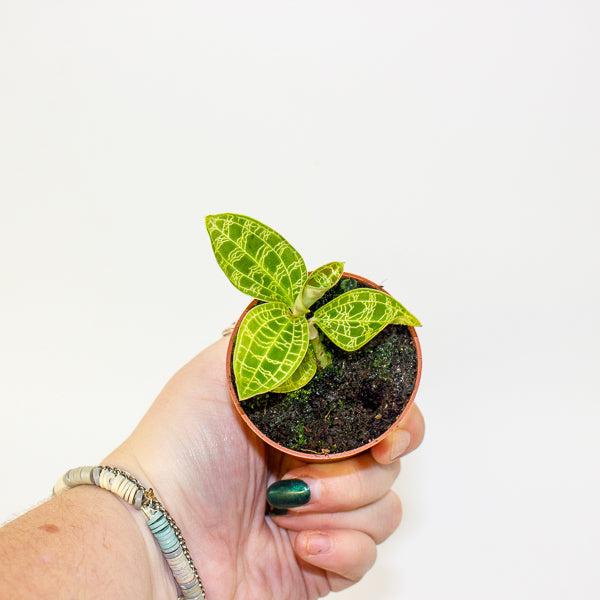1
/
of
5
Emm's Plant House
Macodes petola Jewel Orchid 6cm H8cm
Macodes petola Jewel Orchid 6cm H8cm
Regular price
£12.00 GBP
Regular price
Sale price
£12.00 GBP
Unit price
/
per
Taxes included.
Couldn't load pickup availability
Macodes petola is one of the most breathtaking Jewel Orchids, adored for its luminous, lightning-bolt leaf veins that sparkle gold under light. Unlike typical orchids grown for flowers, this species is cherished for its velvety foliage and intricate, electric venation. Compact, magical, and humidity-loving, it’s a showpiece plant for terrariums, cabinets, and tropical collectors.
- Full Botanical Name: Macodes petola
- Common Names: Jewel Orchid, Lightning Jewel Orchid, Petola Orchid
- Country and/or Region of Origin: Southeast Asia (Malaysia, Indonesia, New Guinea)
- Growing Conditions in Native Habitat: Found on humid forest floors with low light, warm temperatures, and consistently damp, mossy soil rich in organic matter
Care Guide
Care Guide
Share










